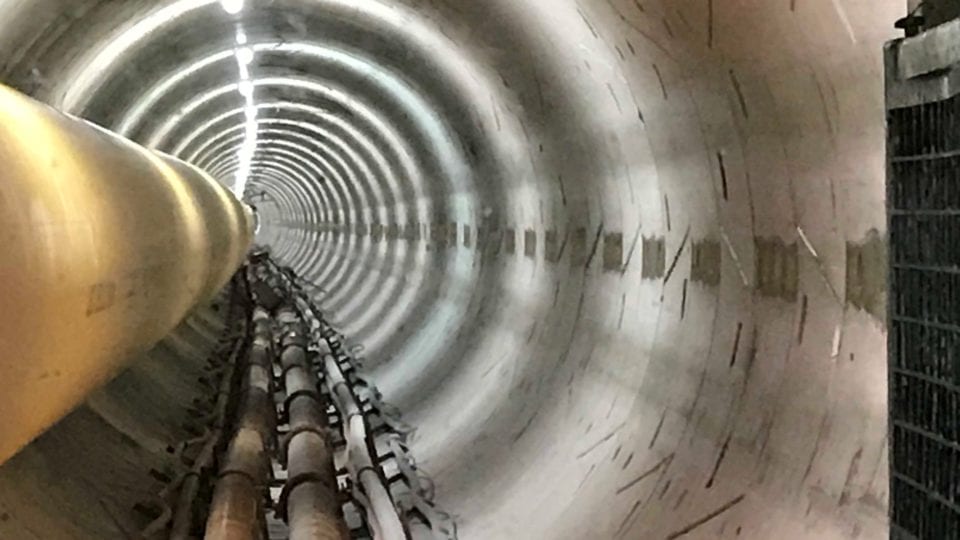National Grid’s Humber tunnel reaches halfway point
National Grid's tunnel boring machine has passed the halfway point under the River Humber representing a major milestone in the project to secure 20 per cent of Britain's gas supplies.
10th January 2019 by Networks

The 510 tonne, 160-metre-long machine, named Mary after Mary Fergusson, the first female fellow of the Institution of Civil Engineers, reached the halfway point on her journey from Goxhill to Paull at 2.30am on 8 January. The total length of the journey is 5km.
It has taken 200,000 man hours to get the tunnel to this stage, with a total of 2,023 concrete rings, each consisting of six segments, being put in place behind the machine as she tunnels 35 metres below the bed of the river.
Steve Ellison, project manager, said: “Mary has done a brilliant job to date and we and our contractors are delighted to have reached the halfway point on the tunnel. There is still a lot more work to do but I would like to say a big thank-you to the 40-strong team of engineers who have worked around the clock in very challenging conditions to get us to this important milestone.
“The machine has pretty much been operating 24 hours a day with the odd shut-down for repair or maintenance since the tunnelling work started on 6 April 2018. There are 20 engineers manning her on every shift and they work in very cramped and warm conditions, far below the river bed.
“All the engineers working on Mary have to undergo specialist training. There is only one emergency exit from the machine and that is back along the tunnel, which will be nearly a 5km journey once she gets towards the opposite bank of the river.
Once the tunnel is finished, Mary will be removed from the tunnel via a shaft on the opposite bank of the river at Paull. Work on the next phase of the project will then begin.
A new 42inch diameter gas pipeline will be laid inside the tunnel. This will replace the existing gas pipeline which currently crosses the river and is laid in a trench just below the river bed.
Comments
Login on register to comment
Related content

Gas
Cadent backs launch of major bio-CNG HGV refuelling station
Gas network’s £250,000 infrastructure investment ensures supplies to existing connected customers have not been impacted

Gas
Editor’s blog: The biggest tests of resilience are yet to come
Network content director Jane Gray reflects on the industry's coronavirus response to date and the challenges still to come.

Gas
From the front line: Chris Garside and Andy Simcoe, Northern Gas Networks
Key workers across the power and gas networks are playing a critical role in the national response to Coronavirus. Network has committed to profiling their stories.
Related supplier content

Power
Load patterns and lockdown: how Covid-19 is impacting electricity networks
Insights into dynamics on the low voltage network as the outbreak unfolds

Downloads
Protect electrical equipment from insulation failure
Insulation faults are a major cause leading to the eventual failure of electrical equipment. Partial discharge (PD) is a very reliable indicator of developing insulation faults. Regular PD testing allows users to detect and analyze PD activity

Heat
How E.ON. is helping the City of London become a zero emissions city
Discover Citigen. Deep in the heart of our bustling capital